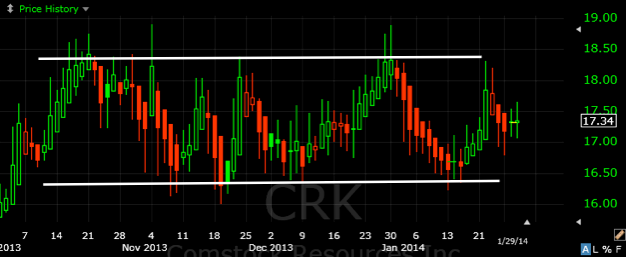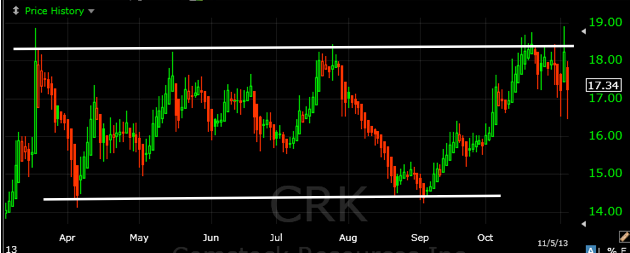Learn with our products
Paper Trading
-
Paper Trading: Trading techniques need not be difficult, nor require hours of research. We’ve stressed the positive value of paper-trading to learn market techniques. Again, the emotion involved with our own money on the line is different than just playing with paper money. For that reason, many market pundits say paper-trading is a waste of time. We disagree. That same dynamic plays out each time any professional practices their skill before a real event. Should a distance runner never practice running before the marathon because its not “real?” Should a college baseball player never practice in the batting cage before a game because “game-emotion” will be different? Nonsense!
-
Paper trading, by its nature, involves choice and decision-making based on entry and exit signals. We can study “setups” to provide trigger points. We are able to see mistakes, poor choices, and simply the vagaries of market action. This allows us to adjust, modify, fine-tune, or just throw out completely strategies tried. Hope can be a good-news, bad-news combination. We are plagued by promises of easy money, never-fail techniques, with hosts of satisfied participants eager to share their winning experiences. Is it just slightly possible there might be some smoke and mirrors in these offers? Without bad-mouthing anyone or any promotion, we can at least be wary, skeptical before spending money. And this is where the “learning” can provide rich rewards.
-
The following chart is a front-page promotion for a “Rolling Stock” service on the web. This is one of their examples promoting the channeling nature of some stocks, which can fatten our pocket books if used correctly. “Used correctly,” means buying at support and selling at resistance. In this case, they identify the levels as $16.50 and $18.50. All we have to do is buy at support and sell at resistance and viola – big returns. What could be easier? Place your orders and go sit on porch while the money rolls in! This is a very attractive ploy, removing the decision-making from trading.
Fig. 1 Rolling-stock trading channel example (CRK).
-
Those who promote such strategies as an easy way to riches would have us believe the rolling nature, in this case for CRK, will continue. And here is where the “training” comes in. Paper trading, making choices for buy and sell market actions, might seem a laborious task, waiting days or sometime weeks for a pattern to play out. That’s the way real trading occurs. However, a sub-set activity of paper trading is “back-trading.” That means going back in time to see how similar patterns played out. It is possible to test a strategy or setup on several tickers to test its value. Simply download historical data, move to some time in the past, then sequentially move forward one day-at-a-time with the data for the test. If we don’t like the result, modify the setup and repeat the test with the same data. We can do this as many times as we like with as many different tickers as we have time to work with. A ”quick-fix” use of the technique is to simply look at the historical price pattern to assess performance. For example, look at the next chart which is an expanded version of the CRK price chart shown above. Notice where the support and resistance lines are shown that correspond to the same lines in Fig. 1.
Fig. 2 ”Where it’s been” and “where it’s going” CRK pattern in Fig. 1.
-
If you are skeptical of a price pattern shown by those looking for your money, take time for a version of Paper Trading, called “back-trading” to test it’s value. In this case, with CRK, we see the price falling from around $18.50 to its suggested channel around $14.50. If we were looking at this price pattern closely on a daily basis, waiting for a rolling channel to develop, on what date would we have said, “there is a rolling channel with support at $14.50 and resistance at $18.50!”?. After the first roll? After the second roll? And what criteria (or setup conditions) would you use to determine that it was a roll? Then, more importantly, how long did it roll after being identified as a roller? These are great questions to play rolling stocks correctly. In our book “Provident Investing,” we teach how good rollers roll only from three to four times before moving to another level or into a trend. A trading (rolling) pattern is a period of indecision in the continuing price pattern. It will move into an uptrend, a downtrend, or to another indecisive level. The trick is in identifying a rolling pattern while it still has life as a roller. In the example of CRK above, precious little money could have been made with this price pattern as a roller. This important fact is revealed through Paper Trading.
Point: Anyone can find rolling patterns in retrospect, after the fact. CRK is such an example. Learn to find profitable patterns in the course of normal trading activity. Back-trading can help you gain experience in doing so.
-
A final note from within the forest: The reason Paper Trading has a bad odor is because the transition from paper to real can be such a shock. The best of skillful practice and rational thought can fly out the window with the market doing its thing. We find ourselves asking why did it do this, or do that, which is contrary to what we have just learned. Is the market wrong? The answer is the market is never wrong! The market is the market, and it changes continually. It never repeats itself precisely! So, the point of this note is that practice helps. The saying goes “practice makes perfect,” but that is quite wrong. “Perfect practice leads to perfection,” is a better rendition. “Leads to” is another operative phrase, where the journey never ends. Our journey towards perfection must rely on our ability to change when it is appropriate, to accept change when it hits us in the face, and to not let “discipline” become an excuse for “pig-headedness” (e.g., staying in a position too long). We can make a successful transition from Paper Trading to real money if we never lose our humility in the stock market. If we lose that, we are in serious trouble!
-
Check out the section on Paper Trading in our book, “Provident Investing.” You will find included plans for a spreadsheet to manage your paper trades, along with some sound counsel in the exercise thereof.
- SiteMap


